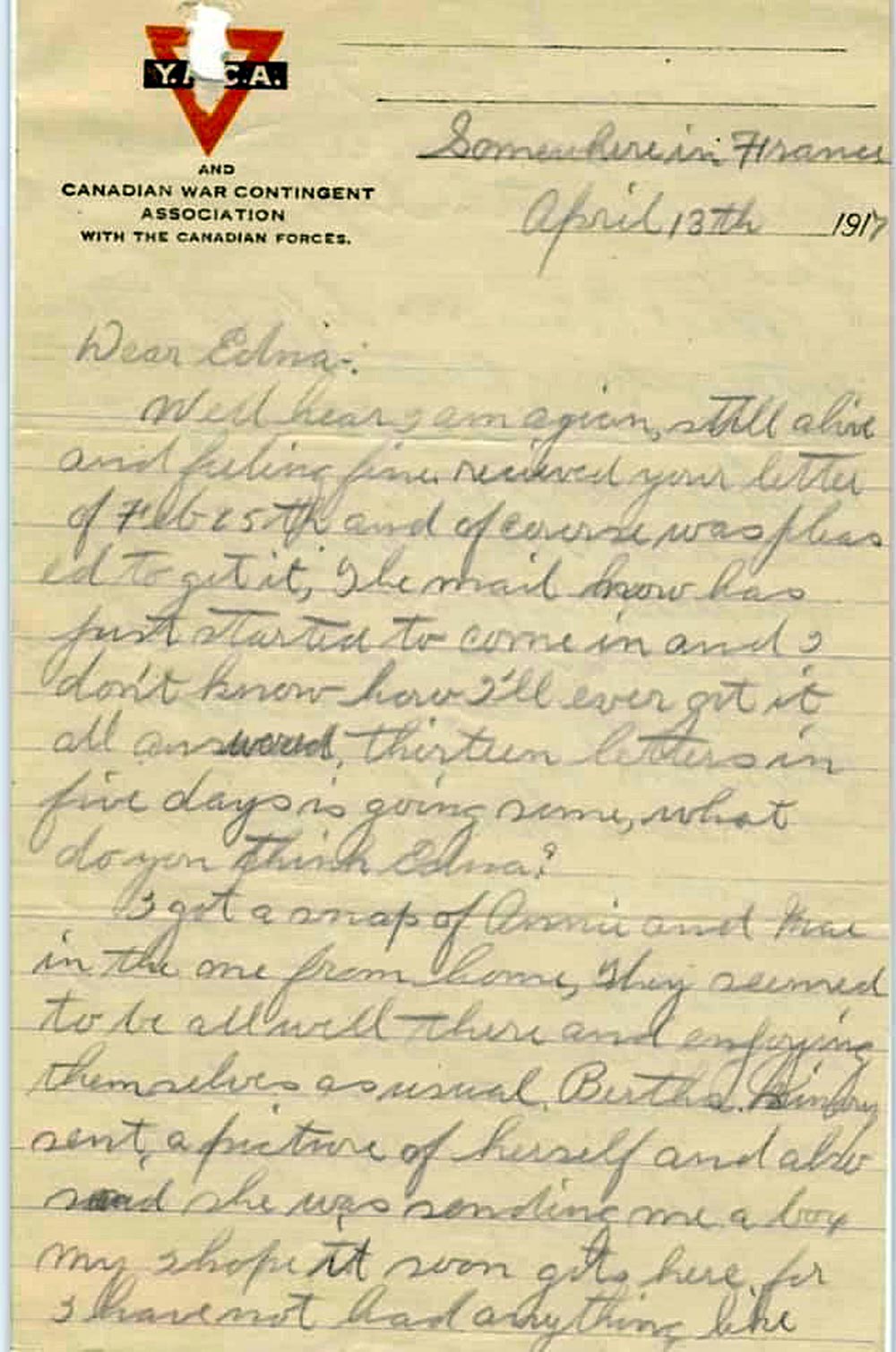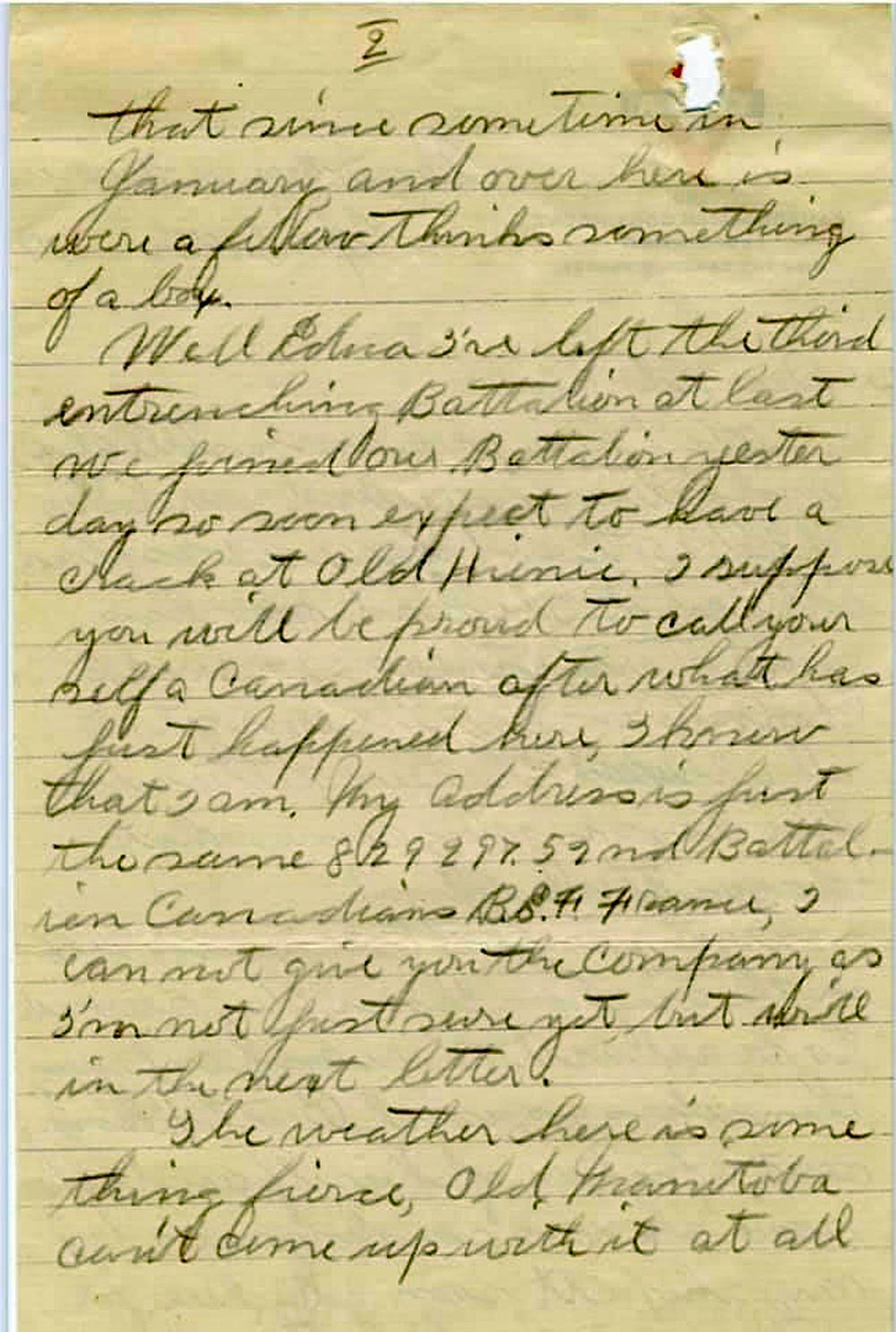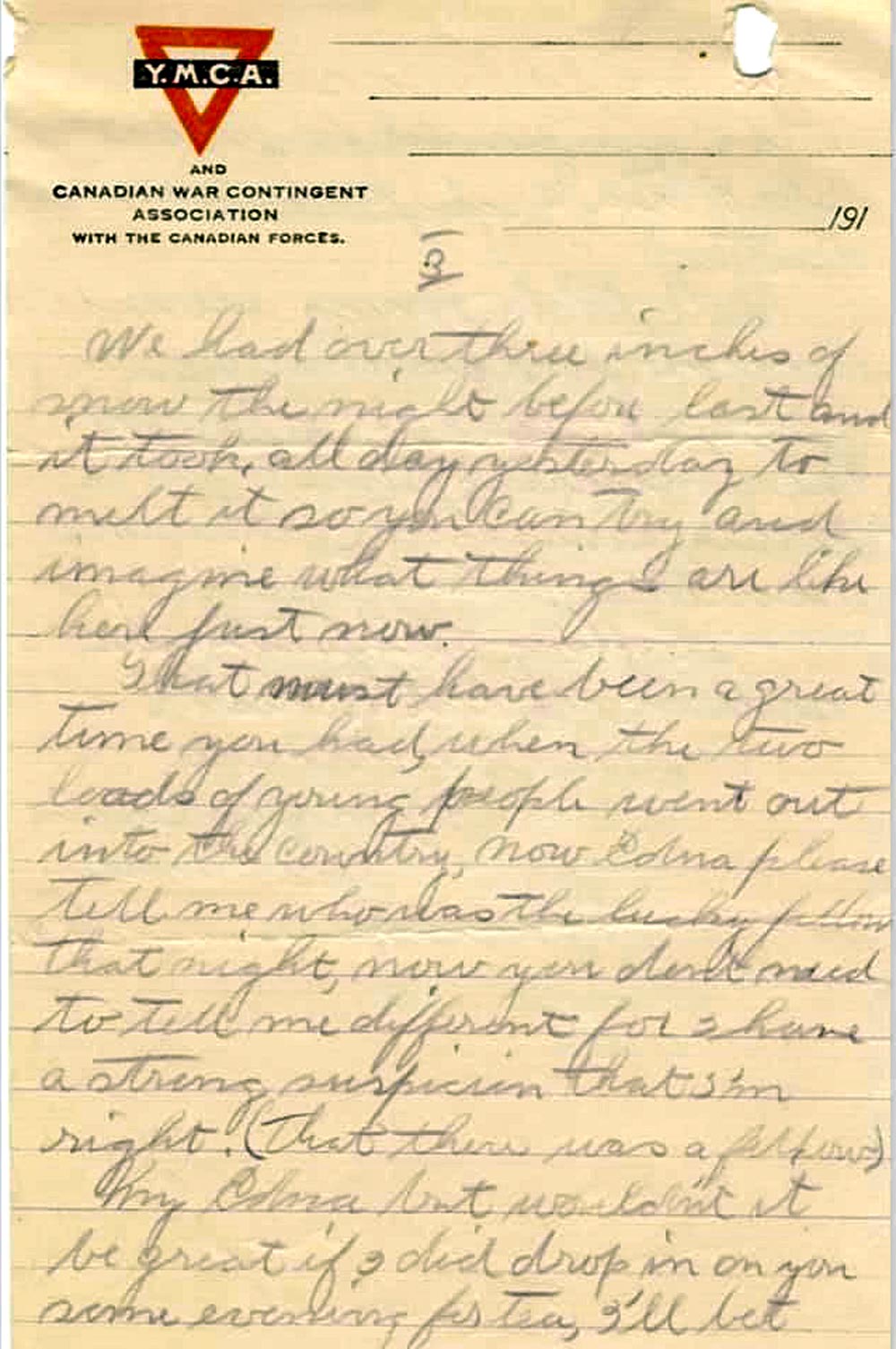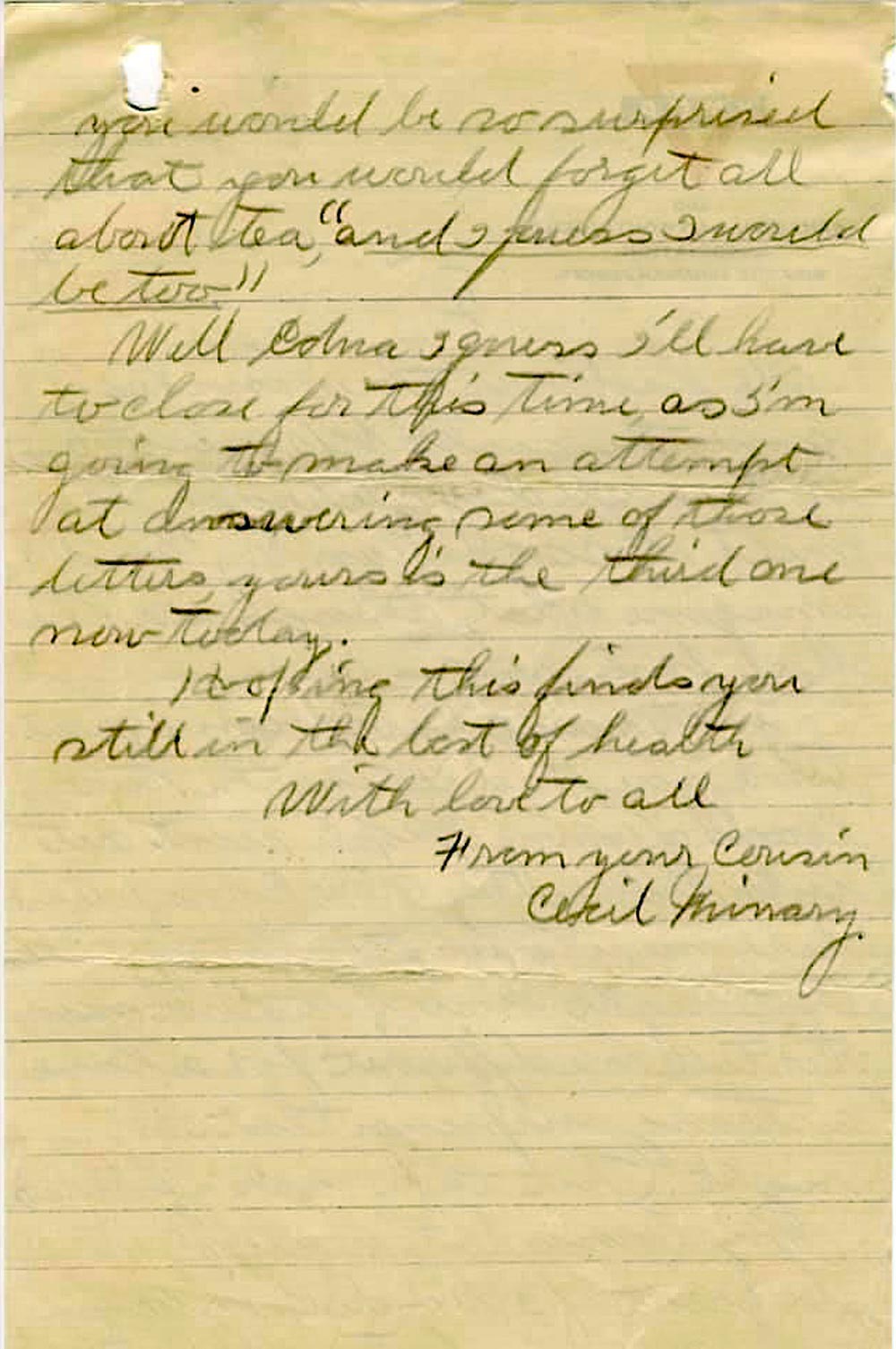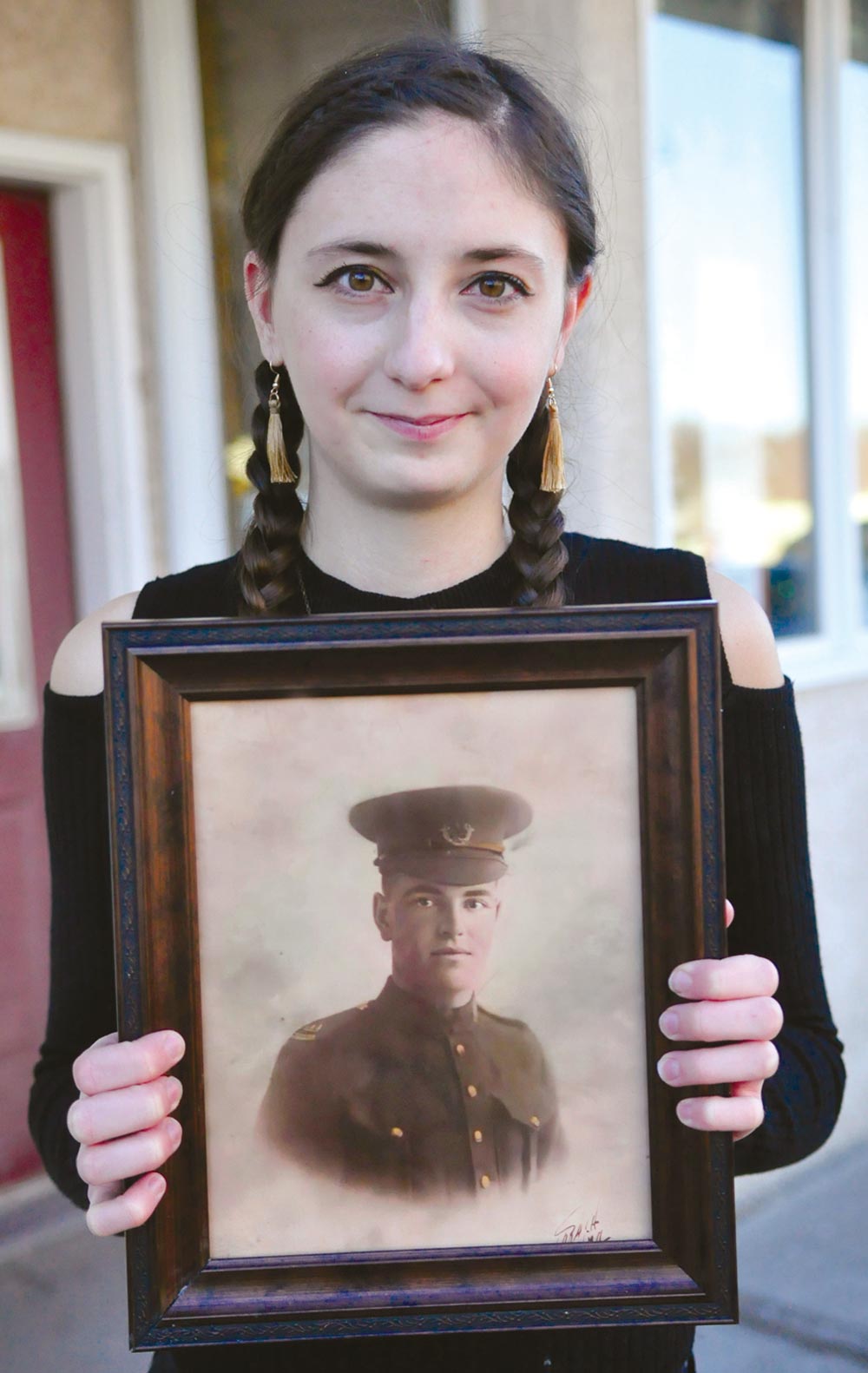

Editor’s note: Pte Minary wrote this letter home from the front two days after the start of the Battle of Vimy Ridge. He does not mention anything about his involvement after Canadian soldiers attacked the ridge on April 11, though he suggested it was a monumental moment in Canadian history when he wrote: “I guess Annie you will be proud to able to call yourself a Canadian after what has just happened here I know I am.” As a Lewis Gunner, he might have been held in reserve after the initial attack. Unfortunately, he did not write anything about this historic CEF battle in this letter.
Somewhere in France
April 13th 1917
Dear Annie,
Well hear (sic) I am again still alive and in good health I have received two more letters from you since last I wrote, dated Feb 12th and March 5th, the difference is because one was addressed to the 52nd Battalion.
I have got eight letters since Sunday besides your two or thirteen in less than a week now that is going some what do you think eh?
The eight this week were one from Chase, one from Edyth Durnin, Mame Manders, Gladys Boyde Winnipeg, Berta Prette, Bertha Minary, Edna Blythe and Margaret Smith.
I don’t know when I will ever get them all answered. Bertha Minary is in Toronto now she sent me a picture of herself and is sending a box of apples and candies my I hope it soon gets here.
And say Annie that snap of you and Mae is a dandy, I just got it the day before your Birthday.
I tell you what I feel kind of proud when I show it to the fellows and say “those are my two sisters” I wish I had a lot more of you ones at home, that is the first I’ve got. But say Annie when did you join and Mae, the Kilties those caps just look like them.
Well Annie I am out of the third entrenching Battalion now, we joined our Battalion yesterday so soon expect to have a crack at Old Hienie (sic).
I guess Annie you will be proud to able to call yourself a Canadian after what has just happened here I know I am.
My address is just the same 829297 52nd Battalion Canadians BEF France. I can’t give you my company as I’m not just shure (sic) yet but will in the next letter.
The weather here is something awfull (sic), Old Manitoba could never begin to come up with it, we had over three inches of snow the night before last and took all day yesterday to melt it away so you can imagine the state of things here. I guess you ones will be busy now getting ready or at seeding by this time.
You certainly must have had quite a drive over to that dance at Uncle Bobs and I think you are making the best of it while dad is away.
Well Annie I guess I’ll close for this time for I want to answer some of the other letters.
Hoping this finds you all well.
With love to all
From Cecil
During the First World War, Pte Cecil Minary served in the CEF, beginning his military training at Camp Hughes prior to being shipped to England for additional training. He saw his first action in France soon after Canada’s involvement in the Battle of Vimy Ridge in April 1917. His great-great-niece Kendra Minary from Souris spent the COVID pandemic going through the original letters he wrote home from England and France prior to being KIA on Aug. 28, 1918. The Lewis gunner died on the battlefield after his crew was hit by a German artillery shell. The Stag’s website will share Kendra’s great-great-uncle’s letters with our viewers here to give you a peek at what a soldier was contemplating with pencil and paper while in the UK training or in France in a trench waiting for the next attack or counter-attack. Pte Minary’s letters are transcribed as they were written by Kendra, so this includes his spelling, grammar and punctuation mistakes. Of note, from his letters home he rarely described his clashes with Fritz, instead preferring to enquire about life on the family farm in Nesbitt or what his family and friends were doing back in Manitoba. Unlike some some soldiers who would share their war stories in their always censored letters, Pte Minary had his own distinct writing style no matter if the letter was for his his dad, sister or a relatives. He also made the job of Army censors easier by not including war details which would be censored by being blacked out. That’s the reason why his letters are “somewhere in France” once he left England for the Western Front. Those original letters are stored at the Wawanesa Museum.
